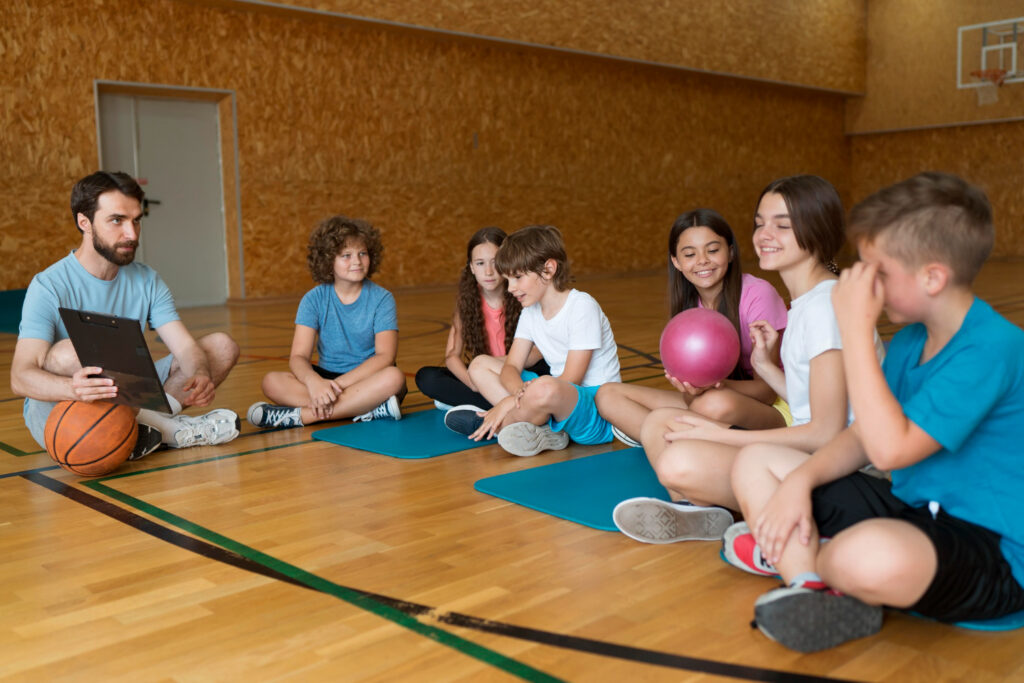Physical education plays a key role in the development of a child’s mind and body. It helps students become more active, disciplined, and confident. From learning basic movements to playing team sports, physical education teaches skills that go beyond the classroom. Many of the best schools in Whitefield recognise this and provide excellent physical education programs that support all-round student development. Understanding the importance of physical education can motivate students to participate more and improve their overall well-being.
What Is Physical Education?
Physical education in schools includes physical activities like sports, games, yoga, and exercises. These sessions help students stay fit, understand teamwork, and manage stress. The importance of physical education is seen in its ability to promote healthy habits and positive behaviors.
Why Physical Education Is Important in Schools
One major reason for the importance of physical education is that it supports both physical and mental growth. It helps improve coordination, strength, and endurance. At the same time, it also teaches students patience, leadership, and goal setting. When students engage in sports or exercises, they feel more energetic and focused in class.
Benefits of Physical Education for Students
Let’s explore the key benefits of physical education that students enjoy:
1. Better Physical Health
Physical education keeps students active, reducing the risk of obesity and lifestyle diseases. Exercises like running, jumping, and stretching improve flexibility, heart health, and muscle strength. These student fitness activities form the base of a healthy lifestyle.
2. Mental Well-being
Physical activity releases endorphins, which are chemicals that boost mood. Students who take part in regular activities are less likely to feel stressed or anxious. This highlights the importance of physical education for mental health.
3. Academic Improvement
Studies show that physically active students often perform better in academics. They have improved concentration, better memory, and are more alert. This proves the impact of physical education on students in a school setting.
4. Social Skills and Teamwork
Playing sports teaches students how to work as a team, respect rules, and communicate better. Physical education helps build friendships and teaches cooperation—making it a core part of physical education in schools.
5. Discipline and Responsibility
Following rules during games, reaching class on time, or keeping equipment safe are lessons learned through physical education. These qualities build character and support overall growth, showing why physical education is important.
Role of Sports in Education
The role of sports in education goes hand in hand with physical education. Sports encourage leadership, strategic thinking, and fair play. They help students accept both victory and failure with grace. This sportsmanship builds a positive attitude and teaches life skills.
Types of Student Fitness Activities
Schools offer many activities as part of physical education in schools, such as:
- Running and jogging
- Yoga and meditation
- Team games like football, basketball, and volleyball
- Individual sports like badminton and athletics
- Dance and aerobics
These student fitness activities suit all interests and skill levels, helping every child find a way to stay active.
How Teachers Support Physical Education
Teachers of physical education create lesson plans, guide students during activities, and assess their progress. They are trained to ensure that the physical activities are safe, inclusive, and goal-driven. This encourages more participation and reflects the importance of physical education in daily school life.
Physical Education and Lifestyle Habits
Students who are active in physical education are more likely to develop healthy habits like good sleep, balanced diets, and regular exercise. These positive lifestyle changes reduce risks of future health problems and support lifelong fitness. The importance of physical education extends beyond school years.
Physical Education and Technology
Modern tools like fitness apps, wearable trackers, and online workout videos are helping students enjoy physical education even at home. This blend of physical movement and digital learning can improve engagement, making the importance of physical education more relevant in today’s world.
Challenges in Promoting Physical Education
Even though the importance of physical education is clear, some schools may lack proper infrastructure, trained teachers, or time in their schedule. Raising awareness among parents, improving school policies, and adding creative sports programs can help overcome these barriers.
Conclusion
The importance of physical education cannot be overstated. It not only helps students stay fit but also shapes their personality, improves focus, and teaches life skills. As a vital part of co curricular activities, physical education plays a key role in overall student development. Schools should continue to encourage physical activities and sports to prepare students for a balanced and successful future. By understanding the benefits of physical education, students become stronger, smarter, and more confident individuals.
FAQs
It builds physical and mental health, teaches teamwork, and improves discipline, making it essential for overall student growth.
Ideally, at least 2-3 sessions a week. Daily activities are even better for student health and focus.
It improves motor skills, builds self-esteem, and encourages early healthy habits.
Yes. Regular physical activity improves brain function, concentration, and classroom performance.
Sports teach leadership, stress management, and social interaction—skills that benefit students in school and life.



